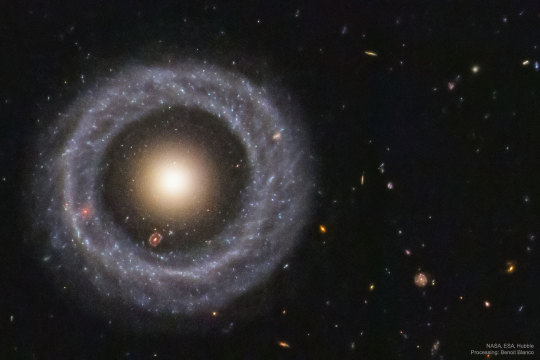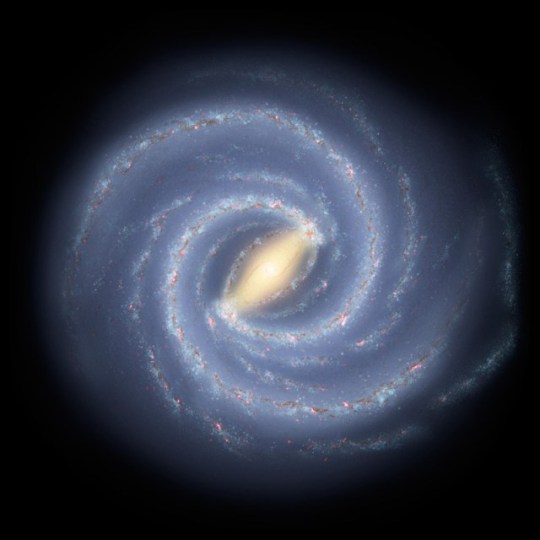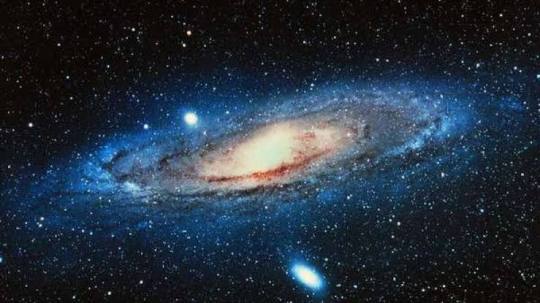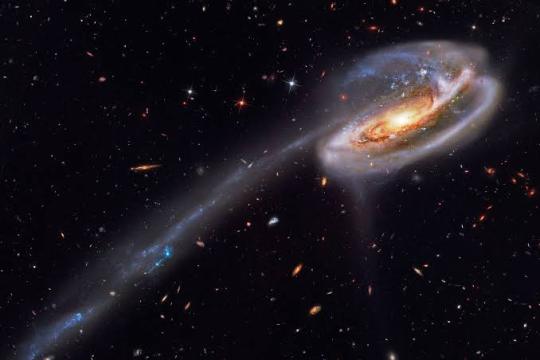#Hoag's object
Explore tagged Tumblr posts
Text


Hubble's Ring & Spiral: NGC 6028/UGC 11105
#Hoag's object#Herculean galaxy#space#astrophotography#nasa#hubble telescope#stars#galaxy#night sky#universe#astronomy#cosmos#planet#solar system#apod
989 notes
·
View notes
Text

The beautiful and mysterious galaxy known as Hoag's Object has a nucleus of older yellow stars surrounded by a ring of young blue stars separated by a gap spanning thousands of light-years.
📸: NASA / ESA / STScI
—
Hoag's Object is an unusual ring galaxy in the constellation of Serpens Caput.
It is named after Arthur Hoag (1921-1999), who discovered it in 1950. He identified it as either a planetary nebula or a peculiar galaxy.
The galaxy has a D25 isophotal diameter of 45.41 kiloparsecs (148,000 light-years).
#Hoag's Object#ring galaxy#space#universe#astronomy#Serpens Caput#Arthur Hoag#celestial objects#planetary nebula#peculiar galaxy#yellow stars#blue stars#light years
80 notes
·
View notes
Text


26 notes
·
View notes
Text

Hoag's Object
Hoag's Object is an unusual ring galaxy in the constellation of Serpens Caput. It is named after Arthur Hoag, who discovered it in 1950 and identified it as either a planetary nebula or a peculiar galaxy. The galaxy has approximately eight billion stars, and is roughly 120,000 light years across.
0 notes
Text

Hoag’s Object, a nearly perfect “ring galaxy” captured by the Hubble Space Telescope (Credit: NASA)
2K notes
·
View notes
Text

Hoag's Object is an unusual ring galaxy in the constellation of Serpens Caput.
64 notes
·
View notes
Photo
A strikingly improbable galaxy. Amazing how the younger stars are so perfectly separated from the much older core.

2024 February 18
Hoag’s Object: A Nearly Perfect Ring Galaxy Image Credit: NASA, ESA, Hubble; Processing: Benoit Blanco
Explanation: Is this one galaxy or two? This question came to light in 1950 when astronomer Arthur Hoag chanced upon this unusual extragalactic object. On the outside is a ring dominated by bright blue stars, while near the center lies a ball of much redder stars that are likely much older. Between the two is a gap that appears almost completely dark. How Hoag’s Object formed, including its nearly perfectly round ring of stars and gas, remains unknown. Genesis hypotheses include a galaxy collision billions of years ago and the gravitational effect of a central bar that has since vanished. The featured photo was taken by the Hubble Space Telescope and reprocessed using an artificially intelligent de-noising algorithm. Observations in radio waves indicate that Hoag’s Object has not accreted a smaller galaxy in the past billion years. Hoag’s Object spans about 100,000 light years and lies about 600 million light years away toward the constellation of the Snake (Serpens). Many galaxies far in the distance are visible toward the right, while coincidentally, visible in the gap at about seven o'clock, is another but more distant ring galaxy.
∞ Source: apod.nasa.gov/apod/ap240218.html
132 notes
·
View notes
Note
Sorry to bother you I'm new here
I heard that all your audios take place in the same universe but in different timelines, is that true? What would be the timeline?
Yep! Everything is connected!
I'll do the series for you and you can fill in the rest on your own.
The Fourseen and Pandora take place about 10 Billion years ago.
Bastard Warrior takes place 137 years after earth is destroyed on the planet, New Tennessee.
BvZ takes place 2 years later on Springrock.
MotH takes place on the world known as Manas, 425 years after earth.
Space Pirates takes place in another galaxy called Hoag's Object around 43 years after Earth.
63 notes
·
View notes
Text
The mysterious 'Hoag's object' A rare ring galaxy containing 8 billion stars Typically ring galaxies are formed by a collision but for Hoag's object this is unlikely. How it formed remains a mystery to this day... (Credit: NASA/(STScI/AURA)/Ray A. Lucas)

#astronomy#space#universe#astrophotography#nasa#astro#astronout#galaxy#galaxies#astronaut#astro observations#astro community#astro notes#nasa breaking news#nasa picture of the day#nasa photos#astrophysics#cosmos#cosmology
218 notes
·
View notes
Text
Photos of them:
Milky Way

Large Magellanic Cloud

Andromeda

Cigar Galaxy

Pinwheel Galaxy

Sombrero Galaxy

Whirlpool Galaxy

NGC 1300

Tadpole Galaxy

Hoag's Object

Black Eye Galaxy

Cosmos Redshift 7

84 notes
·
View notes
Note
trick or treat!! :D
Hello!
You get Hoag's Object!

11 notes
·
View notes
Photo

Hoags Object: A Strange Ring Galaxy
Credits: R. Lucas, STScI, AURA, Hubble Heritage Team, NASA
117 notes
·
View notes
Text


17 notes
·
View notes
Note
trickum treatus

TREAT! You get Hoag’s Object, a rare ring galaxy whose composition resembles an elliptical galaxy having collided with a smaller spiral galaxy but its actual formation is unknown.
9 notes
·
View notes
Note
do you have a favorite star? (yes this is full permission to info dump about space [: )
man i WISH i could infodump about this
i don't know enough to rahhhhh
so i do not have a favorite star,,,
BUT!
i do have a few favorite galaxies i can tell you abt :333
this first one known as the backwards galaxy!

its actual name is NGC 4622, and has that nickname because it spins the opposite way of most other galaxies! it's also a standard ring galaxy, a common formation of galaxies similar to our own milky way :DDD
then this next one is the black eye galaxy!

it's also known as Messier 64, or the "evil eye" galaxy! this one's one of my favorites because of the clouds of dust around the nucleus, with the corona visible it almost looks like a tear in space :>>>
but my all time favorite? has got to be this guy

Hoag's Object, discovered by Arthur Hoag in 1950! this one's interesting because it was identified to be a rare, unusual ring galaxy, with its contents forming a ring around the nucleus instead of a spiral like most galaxies! this one holds about 8 billion stars, likely including many solar systems :]
eheheheeee thanks for the opportunity to ramble dshgds
8 notes
·
View notes
